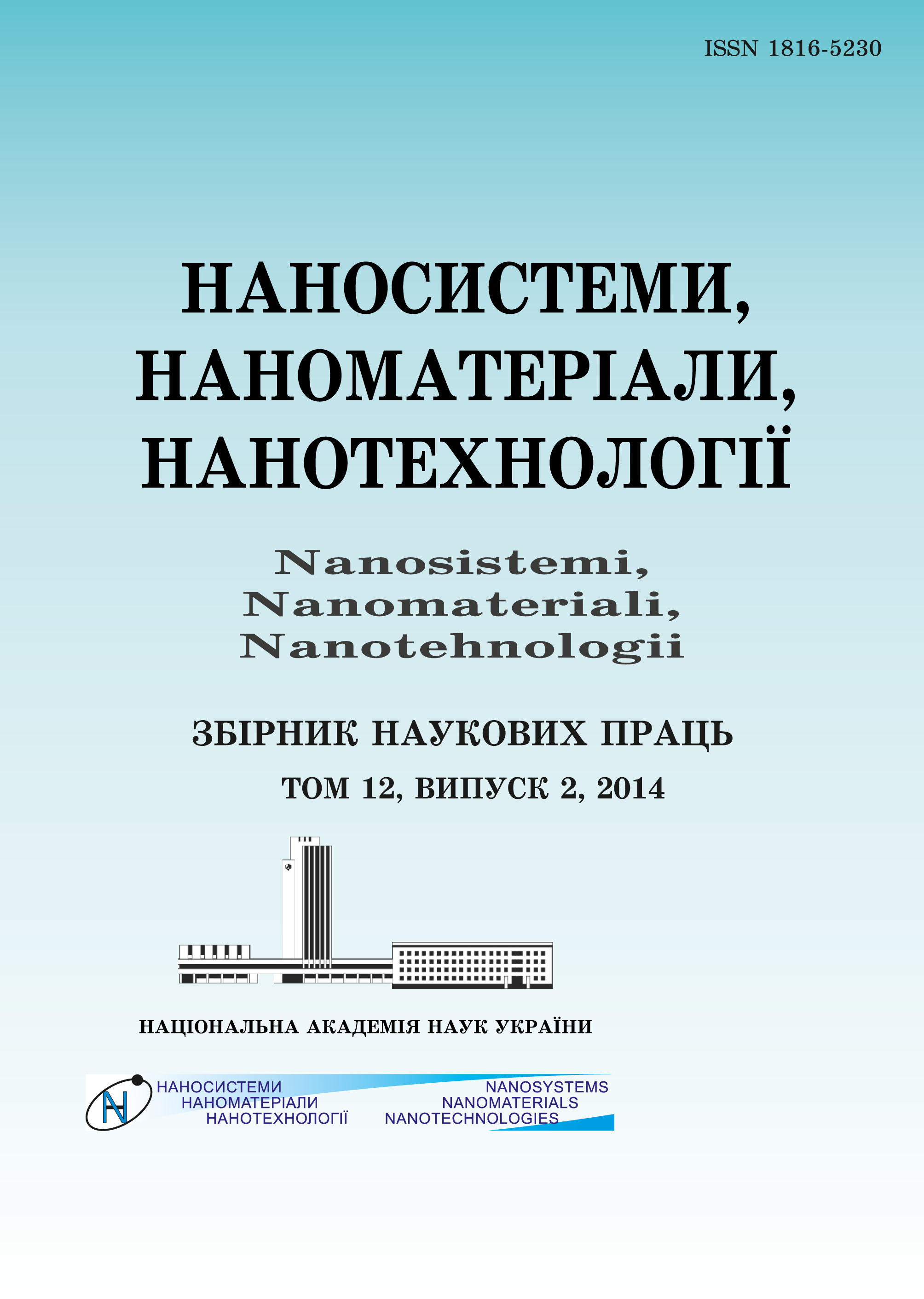|
|
|||||||||

|
Year 2025 Volume 23, Issue 1 |
|
|||||||
|
|||||||||
Issues/2025/vol. 23 /issue 1 |
|
Y.C. GOSWAMI, Ranjana GOSWAMI, and T.K. CHIROVA
Highly-Effective Antifungal and Antibacterial Properties of ZnO, ZnS, FeS2, and SnO2 Against Various Fungal and Bacterial Isolates
215–228 (2025)
PACS numbers: 87.19.xb, 87.19.xg, 87.64.M-, 87.85.Rs
Nanoparticles have been focussed on greatly to determine their application in various fields of science. Their versatility, which is a result of their size, is the key to their ability to be applied in varying areas of industry. The medical and pharmaceutical fields have seen a rise in resistance to the current treatment regimes available against some bacterial and fungal infections among human beings and animals. This raises a need to find other ways to treat the particular microbes, which have become resistant. This study is focussed on the determination of the ability of nanoparticles to elicit antifungal and antibacterial activities, hence, providing a platform or an option for their use in this regard. The nanoparticles of ZnO, ZnS, FeS2, and SnO2 are tested for antibacterial and antifungal activities using the well method. Varying amounts of the nanoparticles are loaded into the wells and observed for the development of inhibition zones after 24 hours of culture at 37°C. The nanoparticles of FeS2 and ZnO are managed to show broad-spectrum activity against the various bacterial and fungal isolates used in this study as evidenced by the fabrication of clear zones of inhibition
KEY WORDS: nanoparticles of ZnO, ZnS, FeS2 and SnO2, antifungal and antibacterial activities
DOI: https://doi.org/10.15407/nnn.23.01.0215
REFERENCES
- M. Vaseem, A. Umar and Hahn, and Yoon-Bong, American Scientific Publishers, 5: 1 (2010).
- Ramanand Bisauriya, D. Verma, and Y. C. Goswami, J. Mater. Sci.: Mater. Electron., 29: 1868 (2018); https://doi.org/10.1007/s10854-017-8097-6
- Nitin Kumar, L. P. Purohit, and Y. C. Goswami, AIP Conference Proceedings, 1675: 020030 (2015); https://doi.org/10.1063/1.4929188
- Wen-Tso Liu, Journal of Bioscience and Bioengineering, 102, No. 1: 1 (2006); https://doi.org/10.1263/jbb.102.1
- T. Sungkaworn, W. Triampo, P. Nalakarn, D. Triampo, I. M. Tang, and Y. Lenbury, International Journal of Biomedical Science, 2: 67 (2007).
- N. Kumar, L. P. Purohit, and Y. C. Goswami, Chalcogenide Letters, 12, Iss. 6: 333 (2015).
- Nitin Kumar, Trilok K. Pathak, L. P. Purohit, H. C. Swart, and Y. C. Goswami, Nano-Structures & Nano-Objects, 16: 1 (2018); https://doi.org/10.1016/j.nanoso.2018.03.001
- Mohammad J. Hajipour, Katharina M. Fromm, Ali Akbar Ashkarran, Dorleta Jimenez de Aberasturi, Idoia Ruiz de Larramendi, Teofilo Rojo, Vahid Serpooshan, Wolfgang J. Parak, and Morteza Mahmoudi, Trends in Biotechnology, 30, No. 10: 499 (2012); https://doi.org/10.1016/j.tibtech.2012.06.004
- Patrick Vandeputte, Selene Ferrari, and Alix T. Coste, International Journal of Microbiology, 2012: 1 (2012); https://doi.org/10.1155/2012/713687
- Sangeetha Gunalan, Rajeshwari Sivaraj, and Venckatesh Rajendran, Progress in Natural Science: Materials International, 22, No. 6: 693 (2012); https://doi.org/10.1016/j.pnsc.2012.11.015
- P. L. Taylor, A. L. Ussher, and R. E. Burrell, Biomaterials, 26, Iss. 35: 7221 (2005); https://doi.org/10.1016/j.biomaterials.2005.05.040
- A. El-Ansary and S. Al-Daihan, Journal of Toxicology, 2009: 1 (2009); https://doi.org/10.1155/2009/754810
- Cristina Buzea, Ivan I. Pacheco, and Kevin Robbie, Biointerphases, 2, No. 4: MR17 (2007); https://doi.org/10.1116/1.2815690
- Jia-Ran Gurr, Alexander S. S. Wang, Chien-Hung Chen, and Kun-Yan Jan, Toxicology, 213, Nos. 1–2: 66 (2005); https://doi.org/10.1016/j.tox.2005.05.007
- Vijay Kumar, P. Rajaram, and Y. C. Goswami, Journal of Materials Science: Materials in Electronics, 28, Iss. 12: 9024 (2017); https://doi.org/10.1007/s10854-017-6634-y
- Y. C. Goswami, R. Mohapatra, and J. B. Kaundal, Chalcogenide Letters, 18, Iss. 5: 255 (2021); https://doi.org/10.15251/CL.2020.185.255
- Ranjana Sharma, Rajeev Singh, Y. C. Goswami, Vijay Kumar, and D. Kumar, Journal of the Australian Ceramic Society, 57, No. 3: 697 (2021); https://doi.org/10.1007/s41779-021-00563-8
- Nitin Kumar, L. P. Purohit, and Y. C. Goswami, Physica E: Low-Dimensional Systems and Nanostructures, 83: 333 (2017); https://doi.org/10.1016/j.physe.2016.04.025
- Ranjana Sharma, Bhoop Singh, Vijay Kumar, Y. C. Goswami, Rajeev Singh, and D. Kumar, Advances in Optical Science and Engineering, 166: 575 (2015); https://doi.org/10.1007/978-81-322-2367-2_71
- Shinji Takenaka, Erwin Karg, Christa Roth, Holger Schulz, Axel Ziesenis, Ulrich Heinzmann, Peter Schramel, and Joachim Heyder, Environmental Health Perspectives, 109: 547 (2001); https://doi.org/10.2307/3454667
- Günter Oberdörster, Eva Oberdörster, and Jan Oberdörster, Environ. Health Perspect., 113, No. 7: 823 (2005); https://doi.org/10.1289/ehp.7339
- Nicole Jones, Binata Ray, Koodali T. Ranjit, and Adhar C. Manna, FEMS Microbiology Letters, 279, No. 1: 71 (2008); https://doi.org/10.1111/j.1574-6968.2007.01012.x
- Villem Aruoja, Henri-Charles Dubourguier, Kaja Kasemets, and Anne Kahru, Science of The Total Environment, 407, No. 4: 1461 (2009); https://doi.org/10.1016/j.scitotenv.2008.10.053
- Yong-Wook Baek and Youn-Joo An, Science of the Total Environment, 409, Iss. 8: 1603 (2011); https://doi.org/10.1016/j.scitotenv.2011.01.014
- Roberta Brayner, Roselyne Ferrari-Iliou, Nicolas Brivois, Shakib Djediat, Marc F. Benedetti, and Fernand Fiévet, Nano Letters, 6, No. 4: 866 (2006); https://doi.org/10.1021/nl052326h
- Nagarajan Padmavathy and Rajagopalan Vijayaraghavan, Science and Technology of Advanced Materials, 9, No. 3: 035004 (2008); https://doi.org/10.1088/1468-6996/9/3/035004
- Zhongbing Huang, Xu Zheng, Danhong Yan, Guangfu Yin, Xiaoming Liao, Yunqing Kang, Yadong Yao, Di Huang, and Baoqing Hao, Langmuir, 24, Iss. 8: 4140 (2008); https://doi.org/10.1021/la7035949
 This work is licensed under a Creative Commons Attribution-NoDerivatives 4.0 International License ©2003 NANOSISTEMI, NANOMATERIALI, NANOTEHNOLOGII G. V. Kurdyumov Institute for Metal Physics, N.A.S. of Ukraine. E-mail: tatar@imp.kiev.ua Editorial board's phones and address About the journal User agreement |